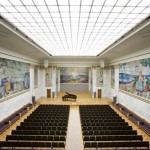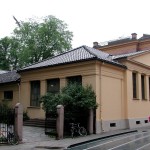
Using GIS Modeling to reconstruct the urban landscape of the Roman city of Ossonoba

Exploitation of prevailing winds and currents by the earliest known seafarers, reaching and colonizing Australasia c 50 000 years age

P4 The first web based viewer for archaeological underwater sites in Europe: The Splashcos─Viewer

Bioarchaeology Module – Loading please hold… Recording human bioarchaeological data from portuguese archaeological field reports

Underwater archaeological remains open to the public diving –close range photogrammetry as a digital preservation and complex documentations of despairing relicts

Questions and bottlenecks: the precariousness of computation heavy documentation in the field

Combining analytical and digital data in archaeology: Towards a multidisciplinary ontological solution. The Salamis terracottas case-study

How to classification? – A trial examining the effectiveness of an elliptic Fourier descriptor for Japanese archaeological studies

Patterns and Recognition: Mapping indigenous settlement topography in the Caribbean

Urbanism in the Cilician Plain from Chalcolithic to Byzantine Period

Artificial Neural Networks to estimate Paleotemperatures in North Patagonia (Argentina) based on micromammals sequences

From the field to the show-room : The Augmented─ Reality Kilns ExhibitiOn (ARKEO)

Teaching GIS in archaeology: What students focus on

Teaching GIS in archaeology: What students focus on

WW2 remains as cultural heritage

Archives, archaeology, and architecture: A multimedia approach for 3D reconstructions

Doha Online Historical Atlas—GIS interactive mapping of space and time in a pearling town

A multidisciplinary project for the study of historical landscapes: New archaeological and physicochemical data from the “Colline Metallifere” district

New Eyes to Old Graphics. Rock Art in the Emirate of Sharjah
























